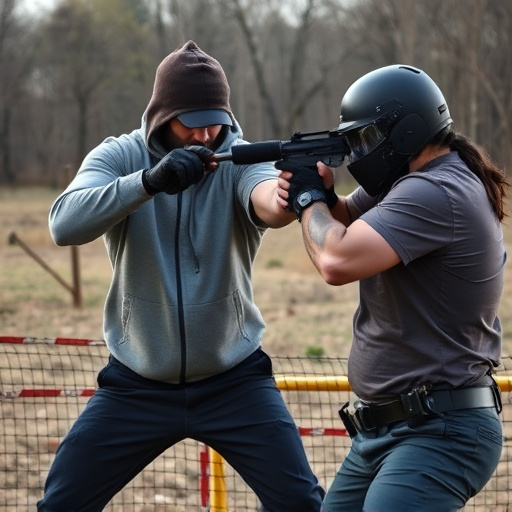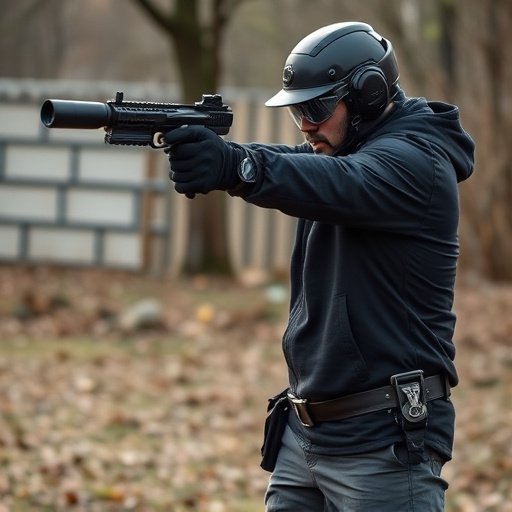The best stun guns for home defense leverage electrical current, a key energy flow element, to incapacitate intruders. Understanding the intricate relationship between resistance, voltage, and conductiveness is crucial for maximizing impact while minimizing collateral damage. Analyzing spread patterns of electrical current helps users select stun guns suitable for specific home defense needs, ensuring optimal performance and strategic electrode placement. By leveraging advanced computer simulations and modeling software, professionals can predict current trajectory, width, and intensity, enabling informed decisions to deploy the best stun gun effectively.
Electrical current spread patterns play a crucial role in understanding the effectiveness of stun guns, essential tools for personal defense. This article delves into the intricate world of electrical behavior and its impact on stun gun performance. We explore how current flows and interacts with human contact points, revealing the science behind these powerful devices. Through analyzing spread patterns, users can make informed decisions when choosing the best stun gun for home defense, ensuring maximum protection and control.
- Understanding Electrical Current and Its Behavior
- The Science Behind Stun Gun Operation
- Analyzing Spread Patterns: Techniques and Tools
- Choosing the Best Stun Gun Based on Spread Analysis
Understanding Electrical Current and Its Behavior

Electrical current, a flow of charged particles, is fundamental to understanding how energy moves through various systems, especially in the context of home defense tools like the best stun gun. When applied strategically, it can incapacitate an assailant quickly and effectively, making stun guns a popular choice for personal protection. The behavior of electrical current is intricate, with factors like resistance, voltage, and conductiveness dictating its path and intensity.
In the realm of home defense, analyzing the spread pattern of electrical current becomes crucial. Understanding how jolts travel through different materials helps users make informed decisions when choosing self-defense tools. For instance, a well-designed stun gun utilizes optimized current distribution to ensure maximum impact while minimizing collateral damage, making it an essential aspect to consider when comparing best stun guns for home defense.
The Science Behind Stun Gun Operation

The operation of a stun gun, often considered the best stun gun for home defense, is grounded in an intricate understanding of electrical current and its effects on the human body. At its core, a stun gun delivers high-voltage, low-current electrical pulses through conductive electrodes, typically on the device’s prongs or bars. When activated, the stun gun generates a strong electric field that disrupts the normal functioning of muscle groups, causing involuntary contractions and significant disorientation.
This disruption is achieved by the electrical current spreading rapidly across the body’s surface, targeting nerve endings and muscle fibers. The precise pattern of current spread is crucial for effective immobilization without severe injury. Modern stun guns employ advanced technologies to optimize this process, ensuring a safe yet powerful response against potential threats.
Analyzing Spread Patterns: Techniques and Tools

Analyzing the spread pattern of electrical current is a crucial aspect of understanding how a stun gun or any electric defense tool operates in real-world scenarios, especially when considering the best stun gun for home defense. This analysis involves studying the trajectory and intensity of the current as it travels from the device to the target, taking into account various factors like distance, angle, and the presence of obstacles.
Techniques such as computer simulations and advanced modeling software enable researchers to predict and visualize these patterns accurately. These tools can simulate different situations, helping professionals choose the most effective stun gun for specific home defense needs. By examining the spread patterns, users can make informed decisions regarding deployment strategies, ensuring maximum impact while minimizing unintended harm.
Choosing the Best Stun Gun Based on Spread Analysis

When selecting a stun gun for home defense, understanding electrical current spread pattern analysis is key. This concept helps identify the optimal device for covering specific areas and ensuring maximum effectiveness against potential intruders. The best stun gun for home defense should have a current spread pattern designed to disrupt muscle control over vital organs, rendering the assailant unconscious or incapacitated.
Factors such as electrode placement, pulse width, and amperage play significant roles in determining the stun gun’s performance. Devices with strategic electrode positioning and higher amperage ratings tend to produce broader current spread patterns, making them ideal for larger areas. For smaller spaces or targeted strikes, a stun gun with precise current distribution can be more effective. Thus, choosing the right stun gun involves considering these factors to match the device’s capabilities with your specific defense needs.
Electrical current spread pattern analysis is a crucial aspect of understanding the effectiveness of stun guns in home defense. By delving into the science behind these devices, we’ve explored how current behavior varies with different operating mechanisms. Utilizing advanced techniques and tools to analyze spread patterns allows for informed decisions when choosing the best stun gun for personal safety. In terms of home defense, knowing which stun gun offers precise and reliable current distribution can make all the difference, ensuring an effective response in challenging situations. Thus, considering spread analysis is essential in selecting the ideal stun gun for your needs.
